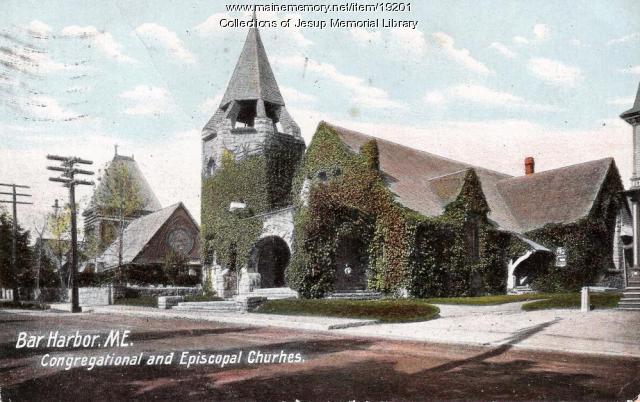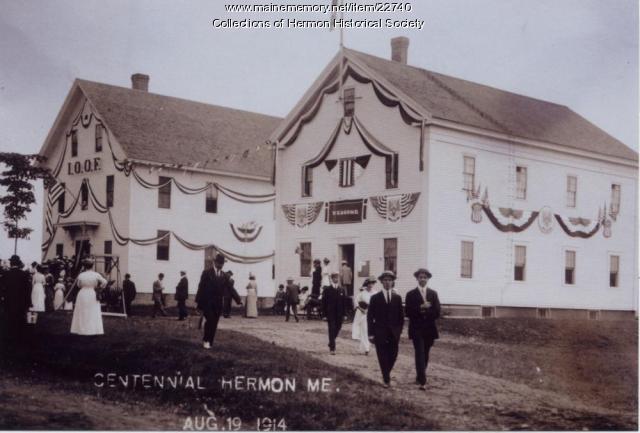Keywords: churches
Item 19201
The Congregational and Episcopal Churches in Bar Harbor, ca. 1920
Contributed by: Jesup Memorial Library Date: circa 1920 Location: Bar Harbor; Eden Media: Postcard
Item 7593
Pine Street Congregational Church, Lewiston, ca. 1900
Contributed by: Lewiston Public Library Date: circa 1900 Location: Maine Media: Phototransparency
Item 89236
Assessor's Record, Catholic Church property, S. Side Central Avenue, Peaks Island, Portland, 1924
Owner in 1924: Catholic Church Use: Church
Item 87412
M.E. Church property, Levett Street, Long Island, Portland, 1924
Owner in 1924: M.E. Church Use: Parsonage
Item 151010
Alterations to Congregational Church, Sebago, 1936
Contributed by: Maine Historical Society Date: 1936 Location: Sebago Client: Sebago Lake Congregational Church Architect: John P. Thomas
Item 150367
Court St. Baptist Church, Auburn, 1888
Contributed by: Maine Historical Society
Date: 1888
Location: Auburn
Client: Baptist Church
Architect: George M. Coombs
This record contains 2 images.
Exhibit
The West Baldwin Methodist Church, founded in 1826, was one of three original churches in Baldwin. While its location has remained the same, the church has undergone numerous changes to serve the changing community.
Exhibit
Like many cities in France, Lewiston and Auburn's skylines are dominated by a cathedral-like structure, St. Peter and Paul Church. Now designated a basilica by the Vatican, it stands as a symbol of French Catholic contributions to the State of Maine.
Site Page
Lincoln, Maine - Methodist Church
"The church was built when William Marsh was pastor. It is located at the intersection of Lee Road and Main Street."
Site Page
Lincoln, Maine - Catholic Church
"… two A priest built a peaceful church In 1902 A church was risen Used the reverend John Bapst The church will not fall Works Cited Fellows, M.D…"
Story
A tour of unique features at St. Andre's Catholic Church
by Biddeford Cultural & Heritage Center
A tour of unique features at St. Andre's Catholic Church
Story
Mike Remillard shares his in-depth knowledge of our community
by Biddeford Cultural & Heritage Center
You will learn a lot from Mike's fascination with many topics from church organs to submarines.
Lesson Plan
Building Community/Community Buildings
Grade Level: 6-8
Content Area: Social Studies
Where do people gather? What defines a community? What buildings allow people to congregate to celebrate, learn, debate, vote, and take part in all manner of community activities? Students will evaluate images and primary documents from throughout Maine’s history, and look at some of Maine’s earliest gathering spaces and organizations, and how many communities established themselves around certain types of buildings. Students will make connections between the community buildings of the past and the ways we express identity and create communities today.




















